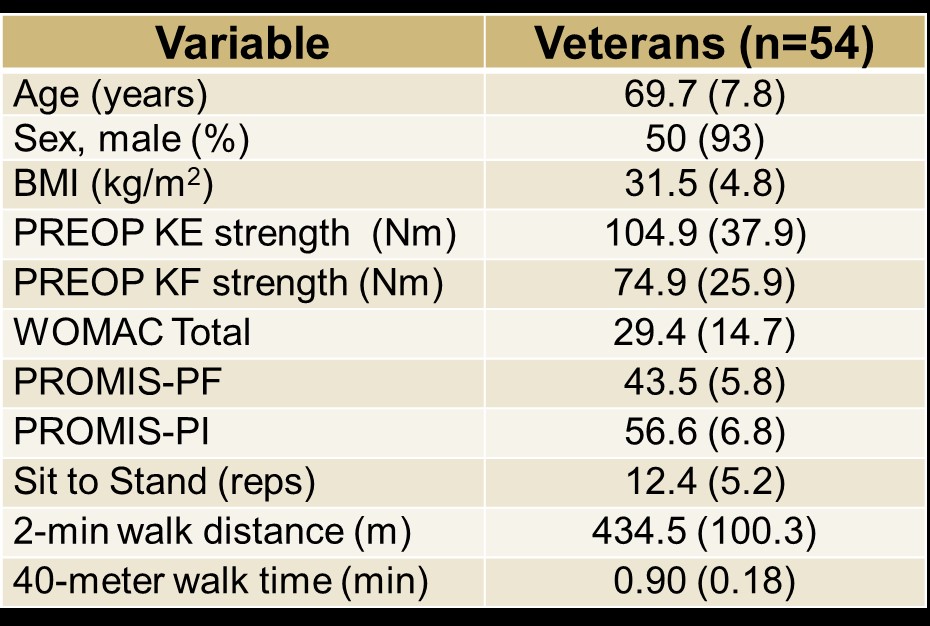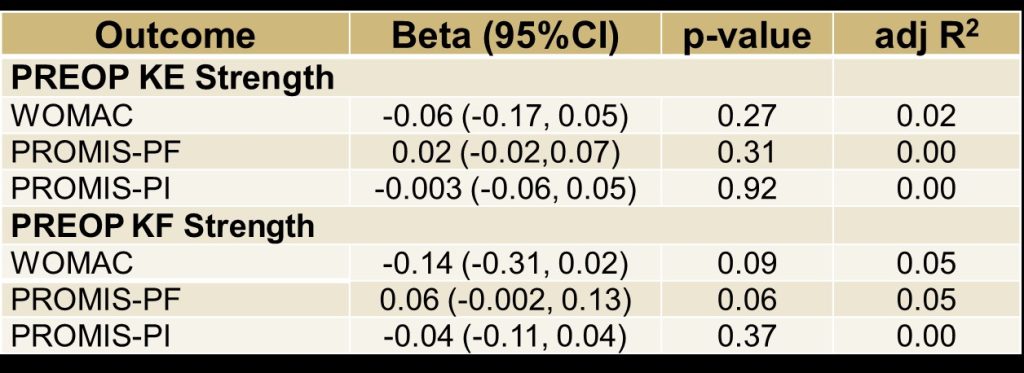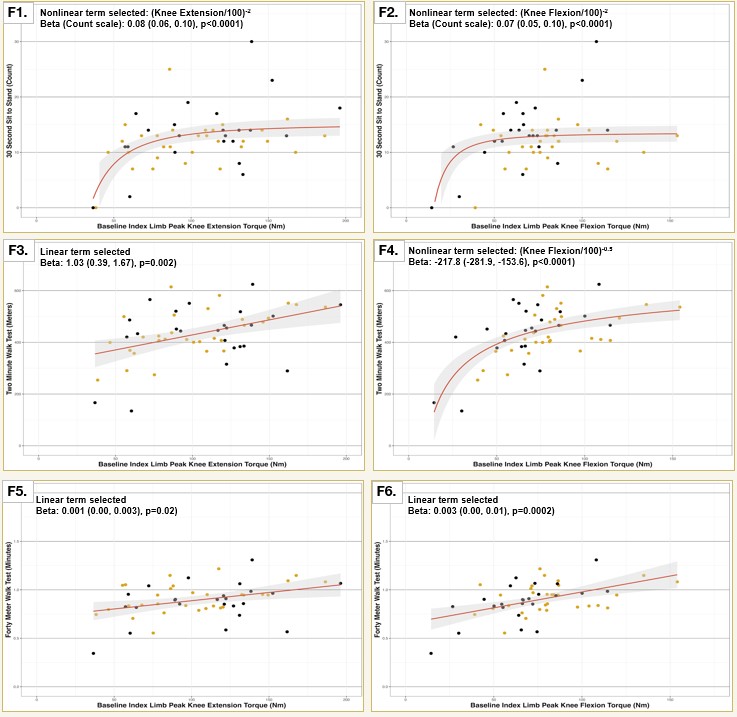College of Health
38 Veteran’s Preoperative Lower Limb Strength Predicts Postoperative Function Following Total Knee or Hip Arthroplasty
Chelsey Wilbur; Jesse Christensen; Jeremy Gililland; and Christopher Pelt
Background
This study was conducted at the VA Medical Center in a motion analysis lab. The participants had markers placed on them and were then asked to perform several tasks that would be tracked by cameras to gather their movement. The participants were also asked to complete a self-assessment questionnaire about how they felt their function and pain was during the assessment. Each participant was recruited from the Veterans Affairs Salt Lake City Healthcare System.
Decline in physical function, related to end-stage knee and hip osteoarthritis,1 is a significant problem in Veterans and commonly managed with total knee or hip arthroplasty (TKA, THA). Veterans do not regain full physical function, despite successful resolution of joint pain post- TKA or -THA.2-3 Chronic muscle weakness is a common impairment after both surgical procedures and observed even years following surgery. 4-5
Methods
54 Veterans participated in this study who were either having a total knee arthroplasty (TKA) or a total hip arthroplasty (THA). This study was conducted between June 2020 and April 2022. Peak knee extensor and knee flexor strength was obtained by maximum isometric output by a Biodex (TKA) or a hand-eld dynamometer (THA). Measures were obtained preoperatively and 6-months post-arthroplasty. Multiple regression [95% confidence interval (CI)] with fractional polynomial relationship shape algorithm was used to evaluate the relationship between PREOP KE and KF strength on POSTOP self-report Western Ontario and McMaster University Osteoarthritis Index (WOMAC), Patient Reported Outcomes Measurement Information System Physical Function and Pain Interference (PROMIS-PF, PROMIS-PI] and performance-based [(30 second sit to stand (30sSTS), 2-minute walk test (2MWT), 40 m walk test (40mWT)] measures, after controlling for age and body mass index (BMI).
Purpose
The purpose of this study was to assess if preoperative (PREOP) knee extensor (KE) and flexor (KF) peak torque is associated with self-reported function or pain, and performance- based measures of physical function in Veterans 6-month postoperative (POSTOP) TKA or THA.
Clinical Relevance
Clinicians can cautiously use Veteran’s PREOP strength to forecast POSTOP physical functional performance post-TKA or THA. This data can help guide clinicians on which Veterans may require more targeted interventions following surgery to maximize their functional recovery.
Table 1. Participant characteristics and outcomes
 Table 2. Analysis of PREOP strength on POSTOP self-reported outcomes
Table 2. Analysis of PREOP strength on POSTOP self-reported outcomes

Figures 1-6. Relationships between PREOP knee extensor torque (left side), or knee flexor strength (right side), with POSTOP performance-based measures of physical function. Gold are TKA and Black are THA.

Conclusions
PREOP KE and KF strength predicted future physical functional performance, but not self- reported function or pain post-TKA or THA. This preliminary data indicates that those Veterans with the lowest PREOP strength levels had worse POSTOP physical function following TKA or THA.
References
- Olsen U, Lindberg MF, Rose C, et al. Factors Correlated With Physical Function 1 Year After Total Knee Arthroplasty in Patients With Knee Osteoarthritis: A Systematic Review and Meta-analysis. JAMA Netw Open.2022;5(7):e2219636.
- Judd DL, Wolfe P, LeDoux CV, Hogan C, Dayton MR, Stevens-Lapsley JE. Trajectories of functional performance and muscle strength recovery differ after total knee and total hip replacement: a performance-based, longitudinal study. Int J Rehabil Res. 2019 Sep;42(3): 211-216.
- Rhon DI, Perez KG, Eskridge SL. Risk of post-traumatic knee osteoarthritis after knee injury in military service members. Musculoskeletal Care. 2019 Mar;17(1):113-119.
- Murtha AS, Johnson AE, Buckwalter JA, Rivera JC. Total Knee arthroplasty for posttraumatic osteoarthritis in military personnel under age 50. J Orthop Res. 2017 Mar;35(3):677-681
- Frisch NB, Courtney PM, Darrith B, Copeland LA, Gerlinger TL. Veterans Undergoing Total Hip and Knee Arthroplasty: 30-day Outcomes as Compared to the General Population. J Am Acad Orthop Surg. 2020 Nov 15; 28(22):923-929.

